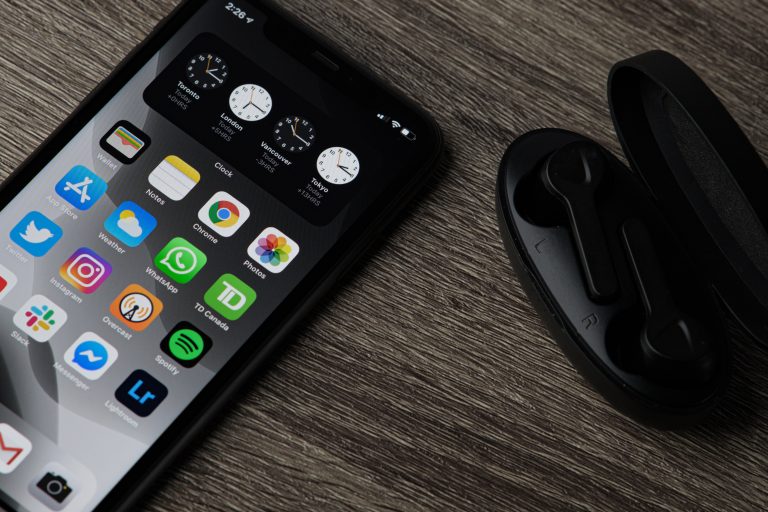
You’ve found an idea, worked on it, and finally built your app. Now you need to grow it, but do you know where to start, or how to reach new heights?
App Development and App Marketing are two fields requiring time, effort, and expertise. You might start your way on Marketing and try to figure out how it works, and you might also have a base knowledge. Either way, it’s totally normal not to be able to have the time and mastery required to do so. In this article, we will explore different strategies that might be useful for marketing an app and help you to understand and apply productive app growth tactics.
What Does Growing an App Means, and What It Takes to Grow an App
Growing an app is crucial for its success in the competitive app market. It’s not just about getting initial downloads, it’s about keeping users engaged, increasing their lifetime value and scaling the app to reach new heights.
To grow an app, it’s important to;
- Understand your target audience
- Optimize your app store listing
- Use social media and influencer marketing
- Create engaging video and influencer content
- Utilize retargeting and app store optimization
- Analyze user feedback and performance data
Before you continue, you may want to learn more about the state of app growth in 2023 and important metrics you should know.
Continuously improving the app and iterating based on data is also important. Growing an app is not only about increasing revenue and downloads, it’s about creating a sustainable and scalable business model. By following the right steps, you can ensure that your app reaches its full potential and stands out in the crowded app market.
Here is a step-by-step guide on how to grow an app from start to finish:
- Find Your Ideal Users: When you build your app, you need to answer some questions like, “Who did you build your app for? Who can be the ideal user for your app?” You can start to find the answers by thinking about their age, sex, job, location, and add as many details as you can. .
- Identify Your Unique Offer: What does your app offer to the users? What are the differences from its competitors? Which wants and needs does your app fulfill that your users are looking for? Such questions will be helpful for you to find your offer.
- Optimize your app store listing: Make sure your app store listing is optimized for search and conversion. Use relevant keywords in your title, description, and screenshots. Use positive reviews and high-quality app screenshots to increase the chances of people downloading your app.
- Find Your Ideal Marketing Platform: After you find the target audience of your app, find out which platforms they are using mostly. Do they use social media? If so, which social media platforms? Do they find your app from the search results? Do they follow influencers about the topics they’re interested in? etc.
- Utilize email marketing: Build an email list of people who have shown an interest in your app. Use email marketing campaigns to promote your app and encourage downloads.
- Consider Paid Advertising: If you want to reach a wider audience, paid advertising might be the key to make your app discovered and to reach new levels. If you’re struggling with finding the budget to market your app and need support, you can submit your app to madduck Publishing and market your app for free with a partnership opportunity.
- Monitor and improve: Continuously monitor your app’s performance and user feedback to identify areas for improvement. Use this information to make updates and improvements to your app to increase user engagement and retention.
How Do I Launch and Grow an App?
To launch and grow an application successfully, you need to identify your main interest group and figure out their necessities;
- Create a minimum viable product (MVP) to test the viability and usefulness of your idea,
- Utilize compelling marketing strategies to draw in users,
- Continuously improve your app based on feedback,
- Explore monetization strategies,
- Always follow the industry trends and advancements,
- Be prepared to adjust and iterate your approach..
What Is a Good Growth Rate for an App?
A good growth rate for an app depends on the industry, the app’s target audience, and the goals of the business. Generally, a healthy growth rate is considered to be around 10-20% monthly. However, for some apps, such as social media or messaging apps, a much higher growth rate may be expected.
It’s important to keep in mind that growth rates can vary widely depending on various factors, and what’s considered good for one app may not be the same for another.
How Do I Grow My User Base?
To grow your user base, you can use a variety of strategies such as;
- Optimizing your app’s visibility in app stores
- Leveraging social media to reach new users
- Using influencer marketing to gain exposure
- Implementing referral programs to incentivize existing users to invite their friends
- Using paid advertising to target your desired audience
Additionally, continuously improving your app’s user experience based on user feedback and data can also help to increase user retention and attract new users through positive word-of-mouth. It’s important to track the success of each strategy and adjust your approach as necessary to achieve sustainable growth over time.
Which Type of App Is Most Profitable?
The profitability of an app depends on various factors, such as;
- The monetization model
- Target audience
- Competition
- Market trends
In general, apps that offer a subscription-based model, such as fitness or productivity apps, have the potential to be highly profitable if they provide enough value to their users to justify the recurring cost. Additionally, apps that offer in-app purchases, such as gaming or entertainment apps, can generate significant revenue if users are willing to spend money on virtual goods or premium features. However, it’s important to keep in mind that the most profitable app may not necessarily be the one that generates the most revenue, but rather the one that provides a sustainable business model that balances revenue generation with user satisfaction and retention. I
f you want to see the most profitable app categories of 2023, you can click here. Also, if you wonder the real life experiences and people’s answer to this question, you can click here.
How Do I Start a Successful App Business?
Starting a successful app business requires careful planning and execution. First, you need to identify a problem or need that your app can address, define your target audience, and develop a Minimum Viable Product (MVP) to test the feasibility of your idea. You will also need to create a business plan that includes;
- Your app’s value proposition
- Monetization strategy
- Marketing plan
- Financial projections
Once you have launched your app, you will need to continuously gather user feedback and data to improve your app and user experience. Ultimately, building a successful app business requires a combination of innovation, strategy, and a deep understanding of your users and their needs.
If you’ve launched your app and looking forward to see better marketing results, continuously improving your app is the key. With the help of data, innovation and strategy, you can understand your users and their needs in a much better way. In the end, with the right approach and expert perspective, your app can reach to its fullest potential, which will bring loyal users, revenue and visibility you’re looking for.


